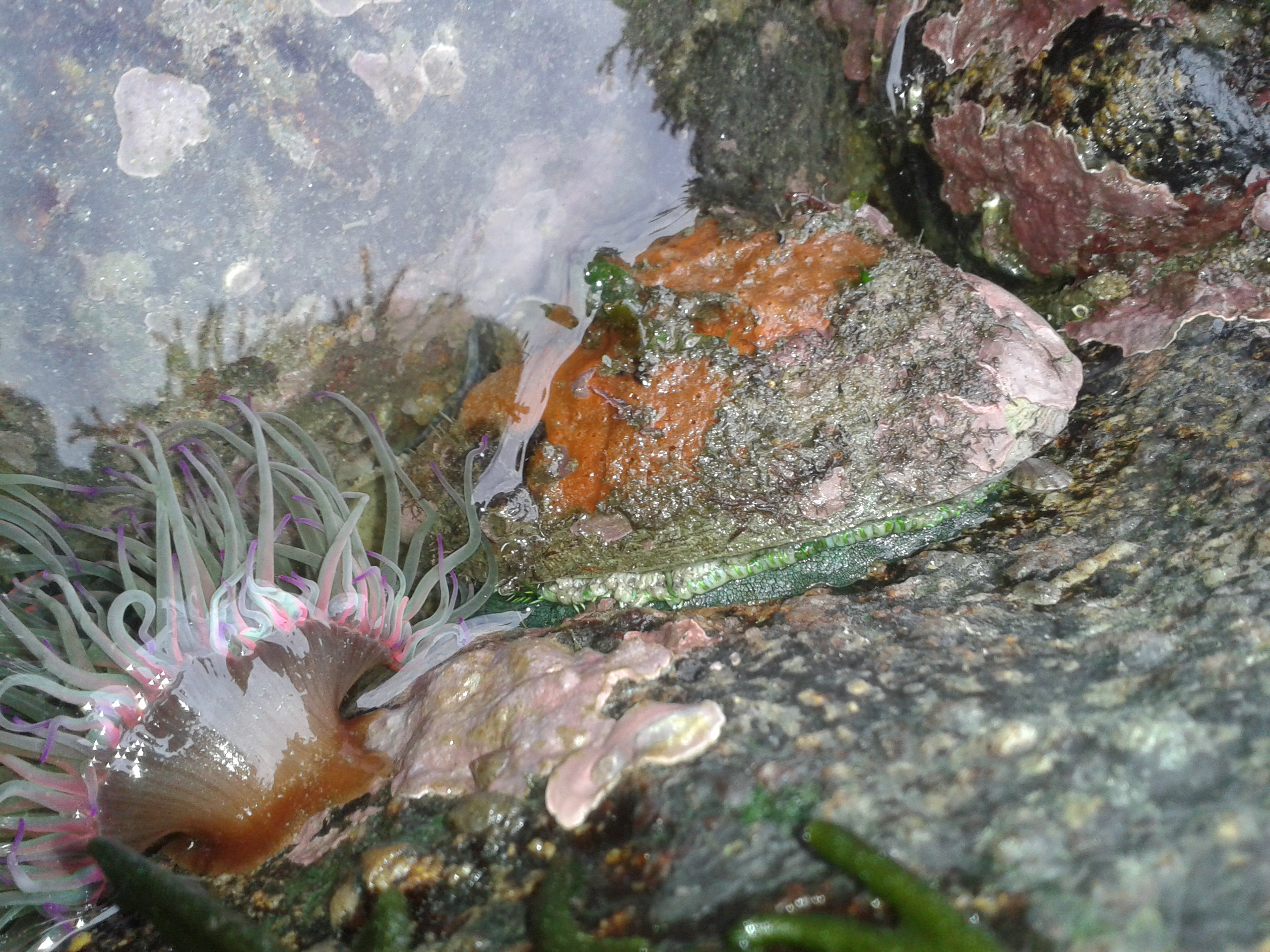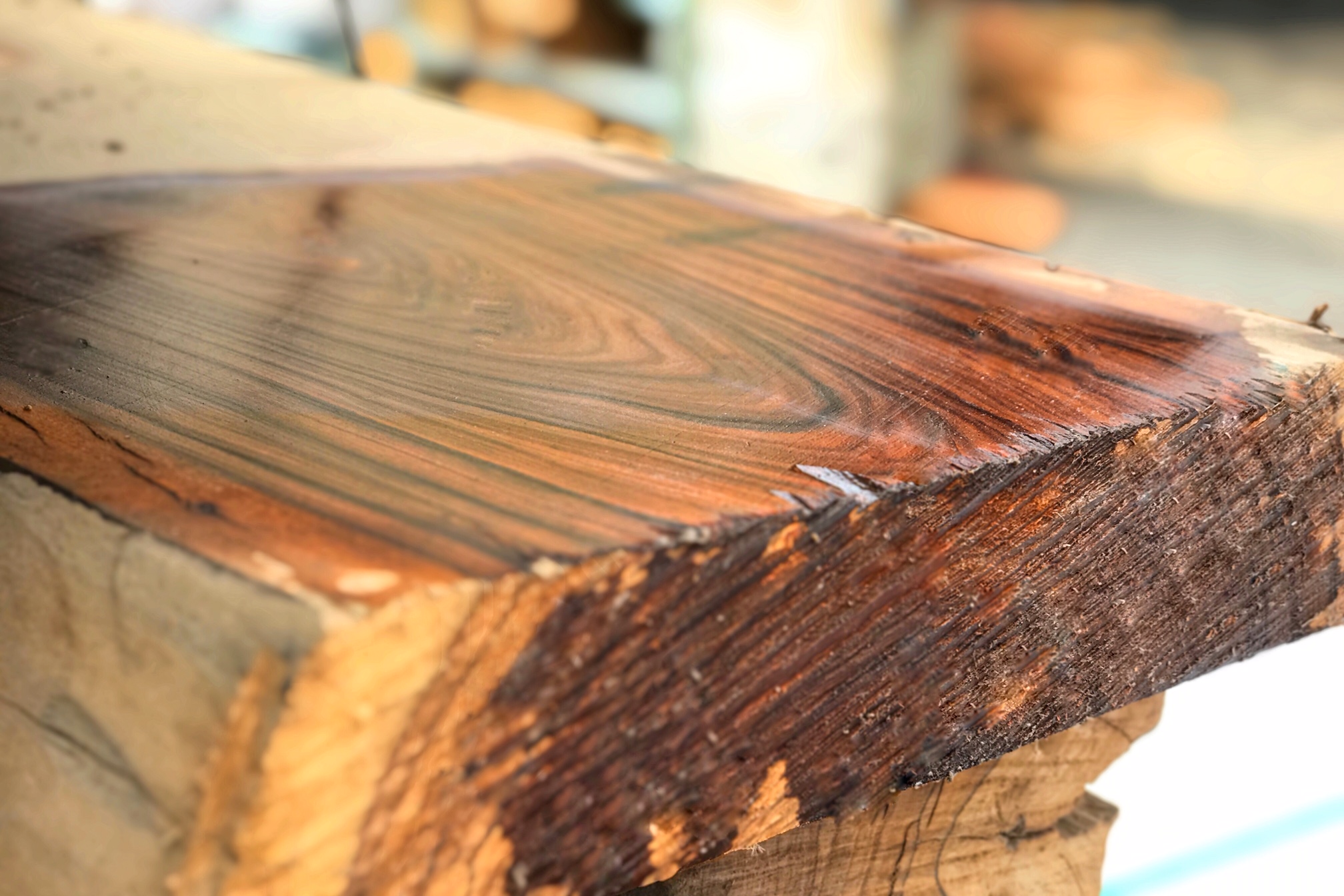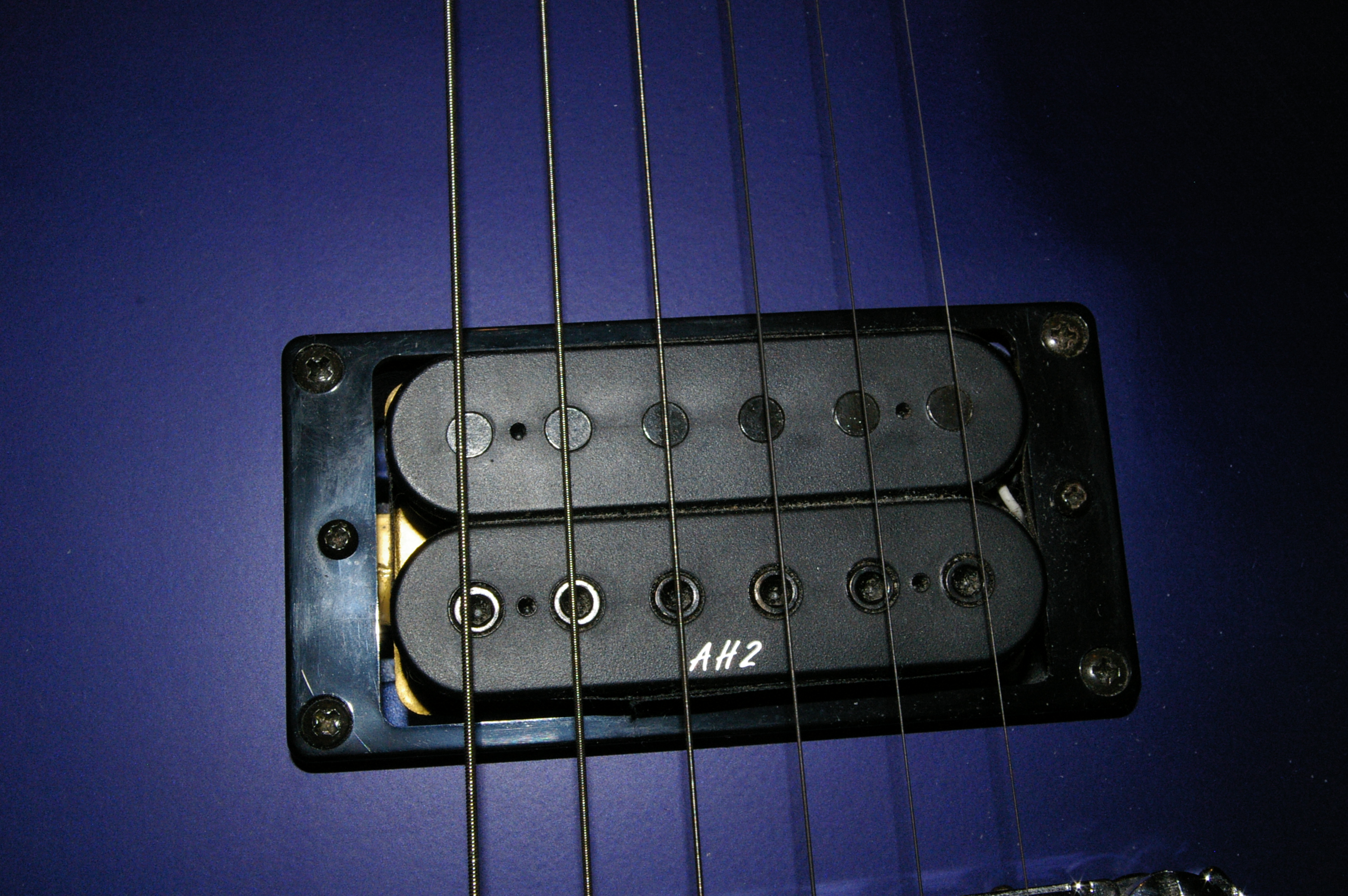|
Fender Jazz Bass V
The Jazz Bass V is the five string ( extended-range) version of the Fender Jazz Bass. It comes in several different versions, with active or passive pickups. Standard Jazz Bass V The Fender Standard Jazz Bass V has single coil pickups, and passive electronics. The neck has 20 frets and a 4+1 tuner configuration. Deluxe Active Jazz Bass V The Fender Deluxe Active Jazz Bass V is a member of the Deluxe series from Fender. The body is similar to the Standard Jazz Bass V. Despite the variety of colors to choose from, every model comes with a 3-ply black pickguard. The body is made of alder or ash, the neck of maple and the fingerboard rosewood or maple (since 2016). Available colors are 3-Color Sunburst, Olympic White and Surf Pearl (as of 2016). The neck has also 20 frets and a flat 12" radius as opposed to American Elite models which had 21 frets and a bound compound radius fingerboard with rectangular block inlays. Pickups are two ceramic Vintage Noiseless with nic ... [...More Info...] [...Related Items...] OR: [Wikipedia] [Google] [Baidu] |
Rosewood
Rosewood refers to any of a number of richly hued timbers, often brownish with darker veining, but found in many different hues. True rosewoods All genuine rosewoods belong to the genus ''Dalbergia''. The pre-eminent rosewood appreciated in the Western world is the wood of ''Dalbergia nigra''. It is best known as "Brazilian rosewood", but also as "Bahia rosewood". This wood has a strong, sweet smell, which persists for many years, explaining the name ''rosewood''. Another classic rosewood comes from ''Dalbergia latifolia'', known as (East) Indian rosewood or ''sonokeling'' (Indonesia). It is native to India and is also grown in plantations elsewhere in Pakistan (Chiniot). Madagascar rosewood (''Dalbergia maritima''), known as ''bois de rose'', is highly prized for its red color. It is overexploited in the wild, despite a 2010 moratorium on trade and illegal logging, which continues on a large scale. Throughout southeast Asia, ''Dalbergia oliveri'' is harvested for use in ... [...More Info...] [...Related Items...] OR: [Wikipedia] [Google] [Baidu] |
Abalone
Abalone ( or ; via Spanish , from Rumsen ''aulón'') is a common name for any of a group of small to very large marine gastropod molluscs in the family (biology), family Haliotidae. Other common name In biology, a common name of a taxon or organism (also known as a vernacular name, English name, colloquial name, country name, popular name, or farmer's name) is a name that is based on the normal language of everyday life; and is often contrast ...s are ear shells, sea ears, and, rarely, muttonfish or muttonshells in parts of Australia, ormer in United Kingdom, the UK, perlemoen in South Africa, and paua in New Zealand. Abalones are marine snails. Their taxonomy puts them in the family Haliotidae, which contains only one genus, ''Haliotis'', which once contained six subgenera. These subgenera have become alternate representations of ''Haliotis''. The number of species recognized worldwide ranges between 30 and 130 with over 230 species-level taxa described. The most comprehen ... [...More Info...] [...Related Items...] OR: [Wikipedia] [Google] [Baidu] |
Pao Ferro
''Libidibia ferrea'', formerly ''Caesalpinia ferrea'', and commonly known as pau ferro, Jucá, Brazilian ironwood, morado, or leopard tree, is a tree found in Brazil and Bolivia. Wood Most species of ''Caesalpinia'' s.l. have poorly defined growth rings, with isolated vessels arranged in radial multiples. Pitting between vessels is alternate and covered, and fibres are generally not divided by a septum. The axial (i.e., longitudinal) parenchyma varies from a winged shape to confluent, and is irregularly storied (i.e., layered), while the rays (perpendicular to growth rings) are of variable height and generally comprise a single or double cell width. ''Libidibia'' in particular has layered longitudinal parenchyma and narrow homocellular (i.e., of uniform type) rays without crystals in the ray cells. Uses Its wood is often used for making fingerboards for electric guitars and basses. It has a similar feel and similar tonal attributes to rosewood, but is near 1000 points softer ... [...More Info...] [...Related Items...] OR: [Wikipedia] [Google] [Baidu] |
Fender American Deluxe Series
The Fender American Deluxe Series was a line of electric guitars and basses introduced by Fender in 1995 and discontinued in 2016. It was upgraded in 2004 and 2010 before being replaced by the American Elite series in 2016. The American Deluxe line replaced the Plus Series models of 1987. Features The entire range came with options such as solid tonewood bodies made from alder or ash, chrome or gold-plated hardware, aged plastic parts, Noiseless pickups, abalone shell dot position fingerboard inlays, a dark aluminum "spaghetti" decal, 22-fret maple necks featuring rosewood, maple or ebony fretboards, quilted or flamed maple tops, rolled fingerboard edges, Fender S-1 switching, highly detailed nut and fret work, a bound top with contoured back on Telecasters, a two-point synchronized tremolo with pop-in arm, LSR roller nut on the HSS model Stratocaster, and staggered locking tuning machines on certain models. American Deluxe bass guitars (introduced in 1995) came in 4-str ... [...More Info...] [...Related Items...] OR: [Wikipedia] [Google] [Baidu] |
Equalization (audio)
Equalization, or simply EQ, in sound recording and reproduction is the process of adjusting the volume of different frequency bands within an audio signal. The circuit or equipment used to achieve this is called an equalizer. Most hi-fi equipment uses relatively simple filters to make bass and treble adjustments. Graphic and parametric equalizers have much more flexibility in tailoring the frequency content of an audio signal. Broadcast and recording studios use sophisticated equalizers capable of much more detailed adjustments, such as eliminating unwanted sounds or making certain instruments or voices more prominent. Since equalizers "adjust the amplitude of audio signals at particular frequencies" they are, "in other words, frequency-specific volume knobs." Equalizers are used in recording studios, radio studios and production control rooms, and live sound reinforcement and in instrument amplifiers, such as guitar amplifiers, to correct or adjust the response of mi ... [...More Info...] [...Related Items...] OR: [Wikipedia] [Google] [Baidu] |
Humbucker
A humbucking pickup, humbucker, or double coil, is a type of guitar pickup that uses two wire coils to cancel out the noisy interference picked up by coil pickups. In addition to electric guitar pickups, humbucking coils are sometimes used in dynamic microphones to cancel electromagnetic hum. Humbuckers are one of the two main types of guitar pickup, the other being single coil. History The "humbucking coil" was invented in 1934 by Electro-Voice, an American professional audio company based in South Bend, Indiana that Al Kahn and Lou Burroughs incorporated in 1930 for the purpose of manufacturing portable public address equipment, including microphones and loudspeakers. The twin coiled guitar pickup invented by Arnold Lesti in 1935 is arranged as a humbucker, and the patent USRE20070 describes the noise cancellation and current summation principles of such a design. This "Electric Translating Device" employed the solenoid windings of the pickup to magnetize the steel strin ... [...More Info...] [...Related Items...] OR: [Wikipedia] [Google] [Baidu] |
Suhr Guitars
Suhr Guitars (officially ''JS Technologies Inc'') is an American company that manufactures electric guitars and basses, guitar amplifiers, and effect units. The company is based in Lake Elsinore, California and was founded in 1997 by John Suhr, who "has a reputation for building exquisitely crafted guitars" and Steve Smith. History Prior to founding JS Technologies Inc, John Suhr had worked at Rudy's Music Stop in New York City doing guitar repair. He started building guitars in 1974, and he created the first Suhr Custom guitar in 1984. Teaming up with Rudy Pensa they started selling guitars under the Pensa-Suhr brand, and the signature model they built for former Dire Straits frontman Mark Knopfler is perhaps their most famous guitar. Around 1991, Suhr moved from NYC to Los Angeles to work with guitar rig builder Bob Bradshaw. Before leaving NYC they had collaborated on the design of a preamplifier, the Custom Audio Electronics (CAE) 3+, used for instance by Steve Lukat ... [...More Info...] [...Related Items...] OR: [Wikipedia] [Google] [Baidu] |
Vintage Noiseless
The Fender Noiseless™ series is a line of electric guitar pickups made by the Fender Musical Instruments Corporation designed to cancel 60 cycle (Hz) hum noise while retaining the characteristic sound of single coil pickups. Introduced in 1998, these pickups consists of a pair of single coils stacked one on top of the other, compacted so as to match the shape and width space as a traditional Fender single coil guitar pickup, while being only slightly taller. The upper coil is actually the sound source, while the lower coil is responsible for the 60-cycle hum attenuation. Alnico V magnetic bars span from one coil to the other, crossing a soft ferrous steel spacer plate that isolates them, without touching it. The spacer plate has mainly two functions: to isolate the lower coil from the vibrations of the string, making sure that the sound is picked up only from the upper one, and to increase the magnetic flux that passed through both coils, increasing the output of the pickup. ... [...More Info...] [...Related Items...] OR: [Wikipedia] [Google] [Baidu] |
Ceramic
A ceramic is any of the various hard, brittle, heat-resistant and corrosion-resistant materials made by shaping and then firing an inorganic, nonmetallic material, such as clay, at a high temperature. Common examples are earthenware, porcelain, and brick. The earliest ceramics made by humans were pottery objects (''pots,'' ''vessels or vases'') or figurines made from clay, either by itself or mixed with other materials like silica, hardened and sintered in fire. Later, ceramics were glazed and fired to create smooth, colored surfaces, decreasing porosity through the use of glassy, amorphous ceramic coatings on top of the crystalline ceramic substrates. Ceramics now include domestic, industrial and building products, as well as a wide range of materials developed for use in advanced ceramic engineering, such as in semiconductors. The word "'' ceramic''" comes from the Greek word (), "of pottery" or "for pottery", from (), "potter's clay, tile, pottery". The earliest kno ... [...More Info...] [...Related Items...] OR: [Wikipedia] [Google] [Baidu] |
Compound Radius
The fingerboard (also known as a fretboard on fretted instruments) is an important component of most stringed instruments. It is a thin, long strip of material, usually wood, that is laminated to the front of the neck of an instrument. The strings run over the fingerboard, between the nut and bridge. To play the instrument, a musician presses strings down to the fingerboard to change the vibrating length, changing the pitch. This is called '' stopping'' the strings. Depending on the instrument and the style of music, the musician may pluck, strum or bow one or more strings with the hand that is not fretting the notes. On some instruments, notes can be sounded by the fretting hand alone, such as with hammer ons, an electric guitar technique. The word "fingerboard" in other languages sometimes occurs in musical directions. In particular, the direction ''sul tasto'' (Ital., also ''sulla tastiera'', Fr. ''sur la touche'', G. ''am Griffbrett'') for bowed string instruments to play ... [...More Info...] [...Related Items...] OR: [Wikipedia] [Google] [Baidu] |
Maple
''Acer'' () is a genus of trees and shrubs commonly known as maples. The genus is placed in the family Sapindaceae.Stevens, P. F. (2001 onwards). Angiosperm Phylogeny Website. Version 9, June 2008 nd more or less continuously updated since http://www.mobot.org/MOBOT/research/APweb/. There are approximately 132 species, most of which are native to Asia, with a number also appearing in Europe, northern Africa, and North America. Only one species, ''Acer laurinum'', extends to the Southern Hemisphere.Gibbs, D. & Chen, Y. (2009The Red List of Maples Botanic Gardens Conservation International (BGCI) The type species of the genus is the sycamore maple, '' Acer pseudoplatanus'', the most common maple species in Europe.van Gelderen, C. J. & van Gelderen, D. M. (1999). ''Maples for Gardens: A Color Encyclopedia'' Maples usually have easily recognizable palmate leaves ('' Acer negundo'' is an exception) and distinctive winged fruits. The closest relatives of the maples are the horse c ... [...More Info...] [...Related Items...] OR: [Wikipedia] [Google] [Baidu] |








